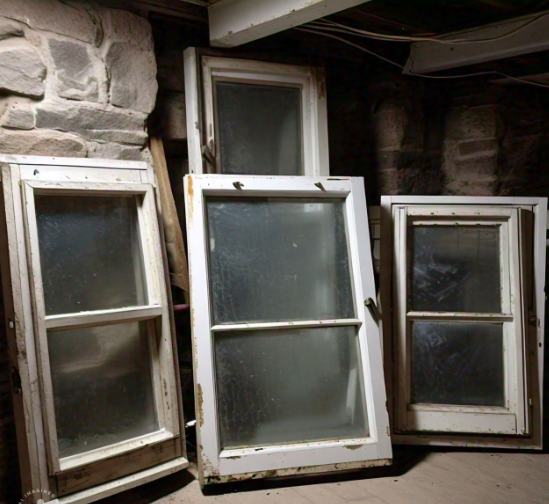Basement Window Storm Windows
Basement windows often face unique challenges, from harsh weather conditions to moisture infiltration. Storm windows provide an effective solution, offering protection and improved energy efficiency. This extensive guide will explore everything you need to know about basement window storm windows, including where to get them, pricing, and answers to frequently asked questions.
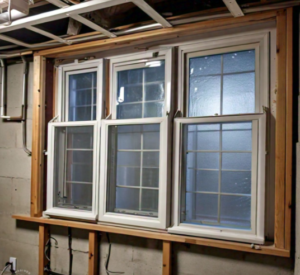
Why Choose Storm Windows for Your Basement?
Benefits
- Enhanced Insulation: Storm windows add an extra layer of insulation, reducing energy costs.
- Weather Protection: They shield against rain, snow, and wind, preventing damage and leaks.
- Noise Reduction: The additional layer helps to muffle exterior noise.
- Increased Security: Provides an extra barrier against break-ins.
- Preservation of Original Windows: Protects existing windows from wear and tear.
Types of Basement Storm Windows
1. Exterior Storm Windows
Description: Installed on the outside of existing windows, providing a protective barrier against the elements.
Benefits:
- Weather Resistance: Excellent protection from harsh weather.
- Energy Efficiency: Reduces drafts and heat loss.
Where to Buy:
- Home Depot: Offers a range of sizes and styles.
- Lowe’s: Known for quality products and installation services.
- Local Window Installers: Custom solutions available.
Pricing: Typically ranges from $100 to $300 per window, depending on size and material.
2. Interior Storm Windows
Description: Installed inside the window frame, these are often removable and can be a more aesthetic choice.
Benefits:
- Easy Installation: Often DIY-friendly.
- Aesthetic Appeal: Less visible from the outside.
Where to Buy:
- Indow Windows: Specializes in interior storm window solutions.
- Amazon: Offers various brands and sizes.
- Local Home Improvement Stores: Custom options may be available.
Pricing: Generally ranges from $50 to $200 per window.
3. Temporary Storm Panels
Description: Removable panels that can be installed during storm seasons and removed when not needed.
Benefits:
- Cost-Effective: Often cheaper than permanent solutions.
- Flexibility: Easy to install and remove.
Where to Buy:
- DIY Home Centers: Provide materials and instructions.
- Online Retailers: Amazon and Wayfair offer various options.
Pricing: Typically ranges from $30 to $100 per panel.
Materials Used in Storm Windows
1. Aluminum
- Durable and lightweight.
- Corrosion-resistant, ideal for exterior use.
2. Vinyl
- Energy-efficient and cost-effective.
- Low maintenance with good insulation properties.
3. Wood
- Aesthetic appeal with a classic look.
- Requires maintenance but offers excellent insulation.
4. Acrylic or Plexiglass
- Lightweight and impact-resistant.
- Clear visibility while providing protection.
Where to Buy Basement Storm Windows
Home Improvement Stores
- Home Depot: Offers a wide range of storm windows and installation services.
- Lowe’s: Known for quality and competitive pricing on storm windows.
- Menards: Provides various window solutions and customization options.
Online Retailers
- Amazon: A vast selection of styles and materials with customer reviews.
- Wayfair: Offers diverse designs and home improvement products.
- Build.com: Specializes in home improvement and renovation products.
Specialty Manufacturers
- Indow Windows: Focuses on energy-efficient interior storm windows.
- Larson Storm Doors & Windows: Known for durable and stylish storm window options.
- ProVia: Offers high-quality, customizable storm windows.
Pricing Overview
The cost of storm windows varies based on material, size, and installation requirements. Here’s a general breakdown:
- Exterior Storm Windows: $100 to $300 per window
- Interior Storm Windows: $50 to $200 per window
- Temporary Storm Panels: $30 to $100 per panel
Factors Affecting Price
- Material: Wood and high-grade vinyl tend to be more expensive.
- Size: Larger windows require more material, increasing the cost.
- Installation: Professional installation adds to the overall cost.
- Customization: Custom sizes and features can raise the price.
Budgeting Tips
- Get Multiple Quotes: Compare prices from different suppliers and installers.
- Consider DIY: Installing interior storm windows yourself can save on labor costs.
- Look for Sales: Home improvement stores often have sales, especially during major holidays.
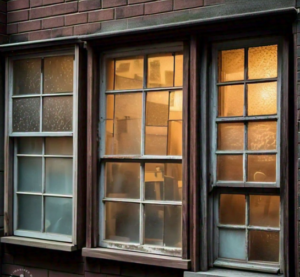
Frequently Asked Questions (FAQ)
1. How do storm windows improve energy efficiency?
Storm windows add an extra layer of glass, reducing drafts and heat loss. This additional barrier helps maintain indoor temperatures, lowering energy costs.
2. Can I install storm windows myself?
Yes, many interior storm windows are DIY-friendly. Exterior storm windows may require professional installation, especially for larger sizes.
3. How do I measure for storm windows?
Measure the width and height of the existing window frame from inside the frame. Take measurements at multiple points to ensure accuracy.
4. How often should storm windows be replaced?
With proper maintenance, storm windows can last 10 to 20 years. Replace them if they show signs of damage or become less effective.
5. Are there eco-friendly storm window options?
Yes, look for windows made from recycled materials or those that offer significant energy savings to reduce environmental impact.
6. How do I clean and maintain storm windows?
Regularly clean with mild soap and water. Check seals and frames for damage, and ensure drainage holes are clear to prevent moisture buildup.
7. Can storm windows reduce noise?
Yes, the additional layer of glass helps reduce exterior noise, making them a great option for homes in busy areas.
8. Are storm windows customizable?
Many manufacturers offer custom sizes and styles to fit your specific needs and aesthetic preferences.
9. What is the difference between a storm window and a window?
Storm windows bring another layer of protection to your home. They’re installed externally, over a regular window, and can aid with noise reduction, improved insulation, energy efficiency, and protection from the elements.
10. What is Storm Windows?
A storm window is a window that is mounted on the outside of existing window panes. Their purpose is to improve thermal insulation and soundproofing. They can also serve to protect glass windows from hail or branches that might fly about during stormy seasons.
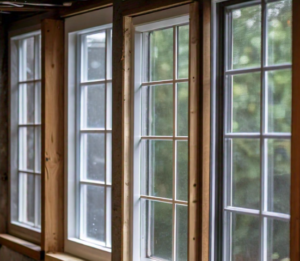
11. What kind of windows go in a basement?
Awning, casement, gliding, and picture windows are our go-to picks for basement windows. Their openings, shapes, and other features make them a good fit in a lower level.
12. How do you know if your window is a storm window?
One way to do this is to look for your reflection. Hurricane glass is made using multiple pieces of glass to meet the requirements of hurricane-resistant glass, which means when you look into a window you should have multiple instances of your reflection. Any less than one reflection likely means it’s standard glass.
13. What is another name for storm windows?
In the United States, the older style of this window is often referred to as a “storm sash”.
14. Do storm windows go inside or outside?
Traditional storm windows go on the exterior of your house, and interior storm windows are installed on the inside of your primary windows. Either type will add extra wind protection and weather insulation to your home. Any storm window (including low-E) can be custom-ordered to fit over your current windows.
15. What are the benefits of storm windows?
Benefits of Low-E Storm Windows: Reduces drafts and increases comfort. Reduces noise. Reflect radiant heat 35% better than clear glass storm windows. Act as an air sealing measure and can reduce overall home air leakage by 10% or more.
16. Do storm windows have screens?
Quality storm windows should also have adjustable ventilation stops on the inside track and glass and screens that can be removed for easy cleaning.
17. What is a stormproof window?
Stormproof casement windows are specifically designed to offer greater protection against harsh weather conditions. They are alternatively known as lipped casements, and the reason is that the lip prevents the window from going further into the frame like a flush casement window.
18. Do storm windows break easily?
Provides extra resistance during high winds: Strong winds and flying debris can damage your windows. Look for storm windows that feature tempered glass — it’s far stronger than normal glass that crumbles rather than shatters upon impact.
19. How long do storm windows last?
20 to 30 years. The lifespan of hurricane and impact windows depends on several factors, including material quality, manufacturing standards, and proper maintenance. Industry experts suggest that well-maintained impact windows can last anywhere from 20 to 30 years or more.
20. How thick is a storm window?
1-1/8″
STANDARD STORM SASH THICKNESS: Standard storm sash thickness is 1-1/8″. Other thicknesses are special. DAYLIGHT OPENING: The area of glass visible in a glazed sash. For STANDARD STORM SASH The GLASS SIZE is 5/16″ wider and 5/16″ higher than the daylight opening.
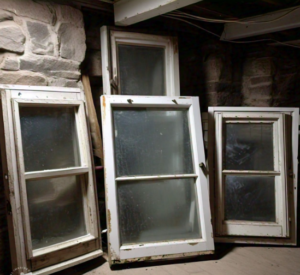
21. What is the difference between storm windows and regular windows?
Storm windows are a much cheaper option than replacing single-pane windows with multi-panes. Storm windows provide an added layer of protection for windows from damage caused by hail or strong winds.
22. Can you open the storm windows?
BLOCK SOUND: Storm windows help dampen noise from traffic, barking dogs, and leaf blowers. Some models claim they can reduce noise transmission by up to 95 percent. CAN STAY IN YEAR ROUND: Double- or triple-track storms allow windows to be opened and closed, so there’s no need to remove them when the weather warms up.
23. How do I know if my windows are storm windows?
Hurricane windows, also known as impact-resistant windows, are specially designed to withstand the forces generated by hurricanes and other extreme weather events. One straightforward method to identify hurricane windows is the presence of a permanent mark in one of the glass corners.
24. Can a storm window be used alone?
Interior Storm Windows. This storm window type fits into the interior window frame, and homeowners can choose between vinyl or aluminum frames. The most common materials used for the window are solid glass, vinyl, or acrylic sheets which are mounted for a few months or can be a stand-alone window that can open.
25. Can a storm crack a window?
Storms and hurricanes typically bring with them both fierce winds and other damaging phenomena. Because windows are, after all, just glass, they’re relatively fragile in the face of so much pressure. There are several reasons that windows can break during a storm or hurricane.
25. How do you secure a storm window?
Ensure the top of the storm window is pushed up snugly into the very top of the opening. 5) Secure the storm window to the window frame. Using your screwdriver and the screws, temporarily secure the top corners of the window. 6) Adjust the expander on the bottom of the storm window.
26. Are storm windows made of glass?
A storm window is a panel that’s mounted to the inside or outside of an existing window pane, says Marco Bizzley, a certified interior designer and consultant. They’re most often made of glass but can also be made of rigid plastic panels or flexible plastic sheeting.
27. Are storm windows bulletproof?
Hurricane windows are treated with a laminate that prevents the glass from breaking but does not stop a bullet from passing through them. These windows are designed to protect against flying debris caused by hurricane winds. So, to answer your question, no, hurricane or impact windows aren’t bulletproof.
28. How much do storm windows cost?
You can expect to pay anywhere from $90 to more than $600 per storm window, with the national average cost landing between $150 to $400 per window. Yes, it’s a wide range in price.
29. Are storm windows permanent?
Storm window installation and maintenance.
They have permanent to semi-permanent applications. To maintain, you’ll need to climb that ladder again and use tools.
30. What size storm window do I need?
The size of the storm sash is typically 1″ wider than the opening between the side casings and 1/2″ higher than the opening between the window head and sill.

31. What is a storm window in construction?
storm window. noun. : a glass window that is placed outside an ordinary window as a protection against severe weather.
32. When should storm windows be installed?
When to Replace or Install Storm Windows and Doors
Your windows haven’t been replaced in 15 years or more.
Strong winds cause your windows to rattle noticeably.
You can hear whistling during high winds around your door.
Windows and doors are drafty, especially in the winter.
33. Can you add storm windows to existing windows?
Storm windows are placed over your existing windows and attached to the window frame using screws, caulk, a track system, or a compression system. Some you will be able to open your window easily, some you need to remove the storm window to do so.
34. What’s the difference between a regular window and a storm window?
Storm windows bring another layer of protection to your home. They’re installed externally, over a regular window, and can aid with noise reduction, improved insulation, energy efficiency, and protection from the elements.
35. What is the best material for storm windows?
Aluminum. Aluminum is by far the most popular material. Vinyl storm windows are available but are not popular. Wood storm windows are for the most part extinct. The choice of any storm window will markedly improve the energy efficiency of a home by reducing airflow through windowpanes and air pockets around windows.
35. How does a storm window work?
What Is the Difference Between Regular Windows and Storm?
Storm windows bring another layer of protection to your home. They’re installed externally, over a regular window, and can aid with noise reduction, improved insulation, energy efficiency, and protection from the elements.

Conclusion
Storm windows are a valuable investment for basement windows, offering enhanced protection, energy efficiency, and noise reduction. By understanding the various types and materials available, you can choose the best solution for your home. Whether opting for exterior, interior, or temporary storm windows, this guide provides the information you need to make an informed decision.

